
How long does it typically take you to summarize your transcripts from user interviews or usability sessions that you conduct? Or how about even lengthy and wordy secondary research papers or reports? Summarizing transcripts can be a very long and arduous process, possibly taking you hours to complete. Sifting through entire videos or documents to find the key insights, removing errors and trying to get a clear understanding of the data.
Lately UX Researchers, Product Managers and UX Designers have been using AI tools to automate the task of summarizing transcripts. AI tools can quickly and accurately summarize large amounts of text, freeing up time to focus on other tasks.
So what exactly are the benefits of using AI tools to summarize transcripts in UX research?
- Increase productivity: AI tools can quickly and accurately summarize transcripts, freeing up your time to focus on other tasks.
- Improve accuracy: AI tools can be more accurate than human transcribers, especially for long and complex transcripts.
- Increase consistency: AI tools can produce consistent summaries, which can be helpful for comparing data from different studies.
- Facilitate collaboration: AI tools can make it easier to share and collaborate on transcripts, which can improve the quality of the research.
However, AI transcript summarization may not always be 100% accurate, the intention is to summarize a transcript to help increase your productivity. You are still required to interpret and analyze the data to find patterns and relate the findings back to your initial project objectives.
Even though summarizing transcripts may seem like swift solution, keep in mind there are also challenges of using AI tools to summarize transcripts in UX research
- Cost: AI tools can be expensive, especially for large projects.
- Accuracy: AI tools are not always 100% accurate, and they can sometimes produce inaccurate or misleading summaries. Even the best AI tools can make mistakes. Be sure to review the summaries carefully and make any necessary corrections
- Bias: AI tools can be biased, and they may reflect the biases of the data they are trained on.
- Interpretation: AI tools can only summarize transcripts, they cannot interpret the data. Researchers still need to interpret the summaries and draw conclusions from the research.
- Not all-in-one tool: AI tools can be a valuable tool, but they cannot replace human judgment that ensures the accuracy and quality of your research
Various tools to help with transcript summarization
1. Otter
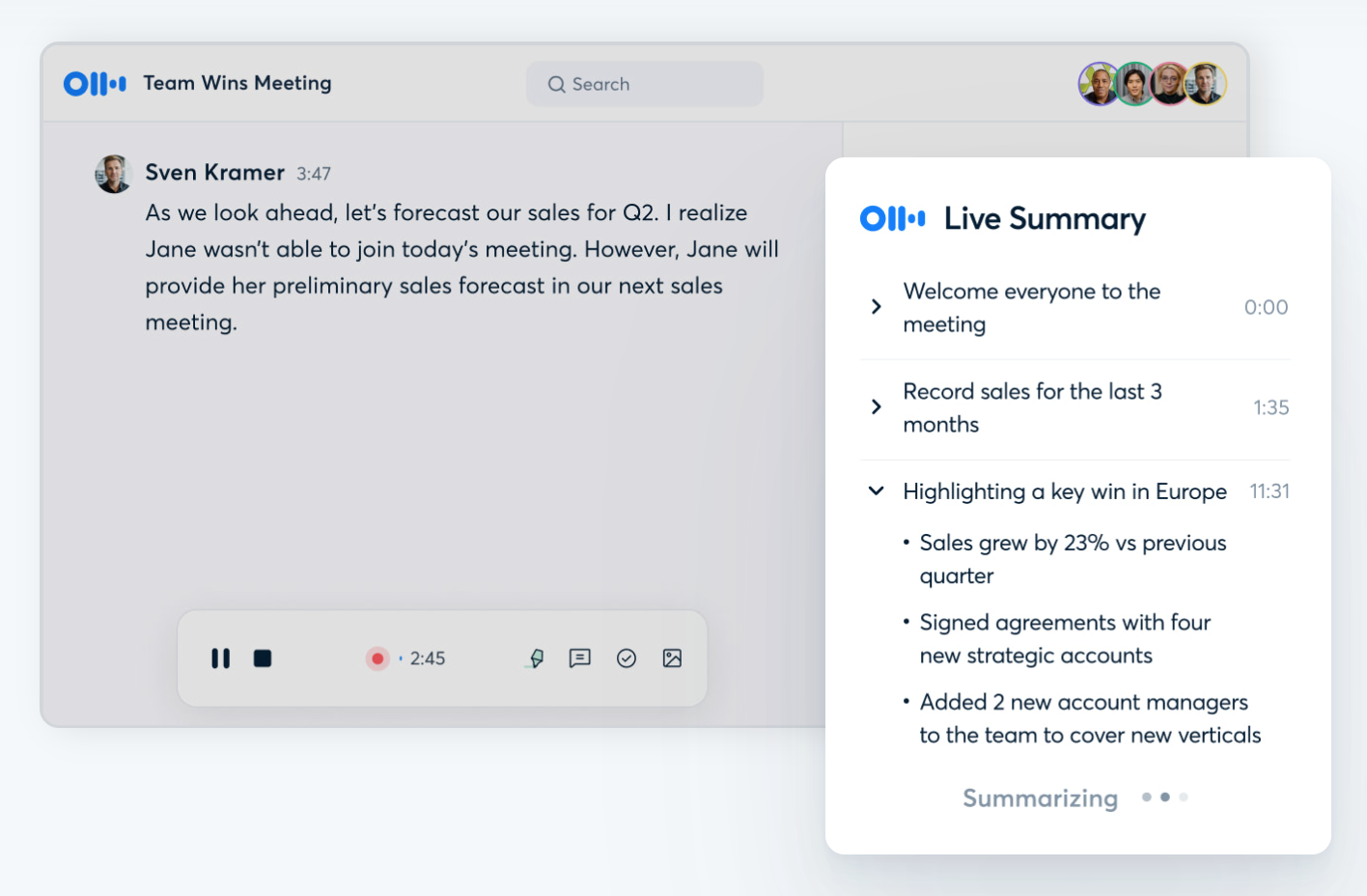
Otter is trained on a dataset of human-written summaries, which means that it may produce summaries that are more human-like and can generate summaries of up to 3,000 words. You can connect Otter to your Google or Microsoft calendar and it can automatically join and record your meetings on Zoom, Microsoft Teams and Google Meet and provide conversation summarization. If you are late to a user interview as an observer, Otter generates insights in real time to easily catch up on anything missed or if you can’t make a certain interview or want to share insights from a sessions, Otter will email you a summary saving time of having to revisit the entire transcript.
Best For: If you are using Zoom, Google Meet or Microsoft 365 products for your user interviews as it easily integrate with these tools to summarize the interactions
2. Dovetail
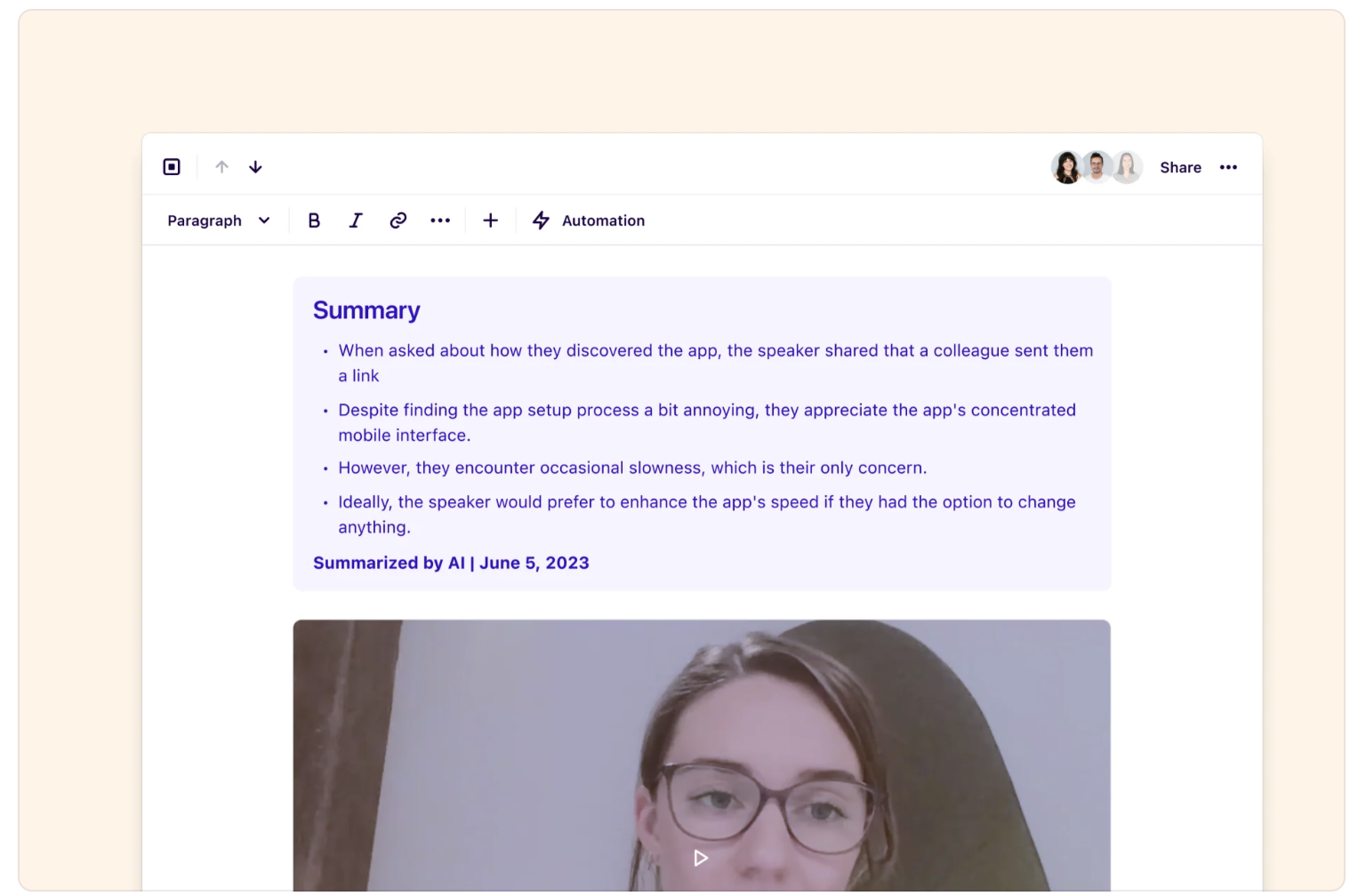
Dovetail offers ai transcript summarization as a feature if you have a current plan, allowing you to save time & create valuable insights by identifying key themes in interviews, documents or customer feedback. If you include content like PDFs, reels and transcripts, it will automatically generate a summary of the key takeaways. You are also able to regenerate your summaries to your liking or even into bullet points or paragraph summaries.
Best For: If you are already using Dovetail for qualitative synthesis
3. Kraftful
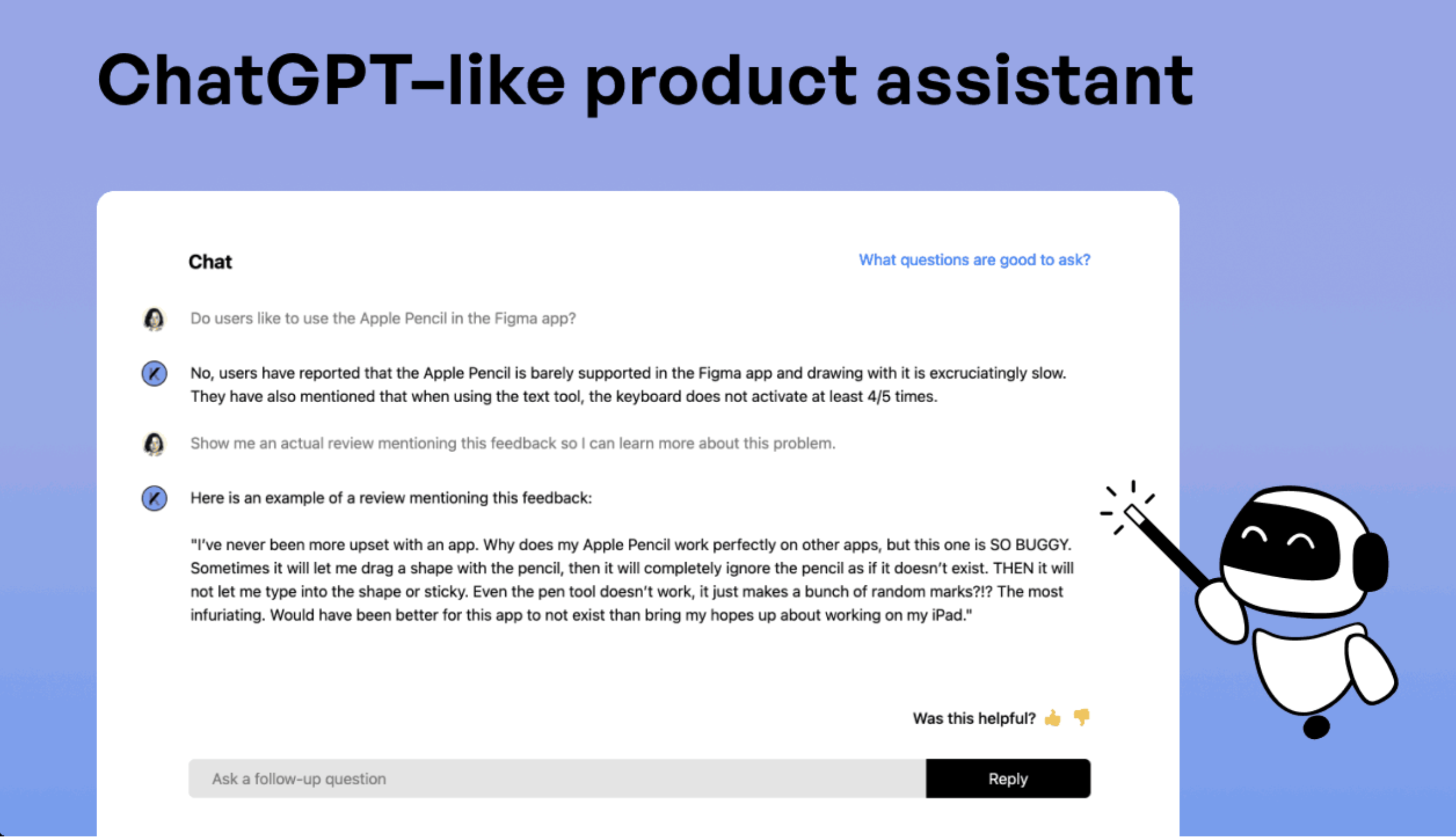
Kraftful is a new Ai summarization solution with products in beta that will “synthesize user feedback from app store reviews, support tickets, call transcripts, and really anywhere else users may wanna give you an earful.” you’ll quickly learn what users need so you can focus on building a delightful product…or whatever else you like doing with your time. You can analyze feedback through a quick conversation to nose out what previously could only be done with hundreds of hours of manual review
Best For: those looking to summarize user feedback across multiple channels such as app store reviews, support tickets and transcripts
4. Grain
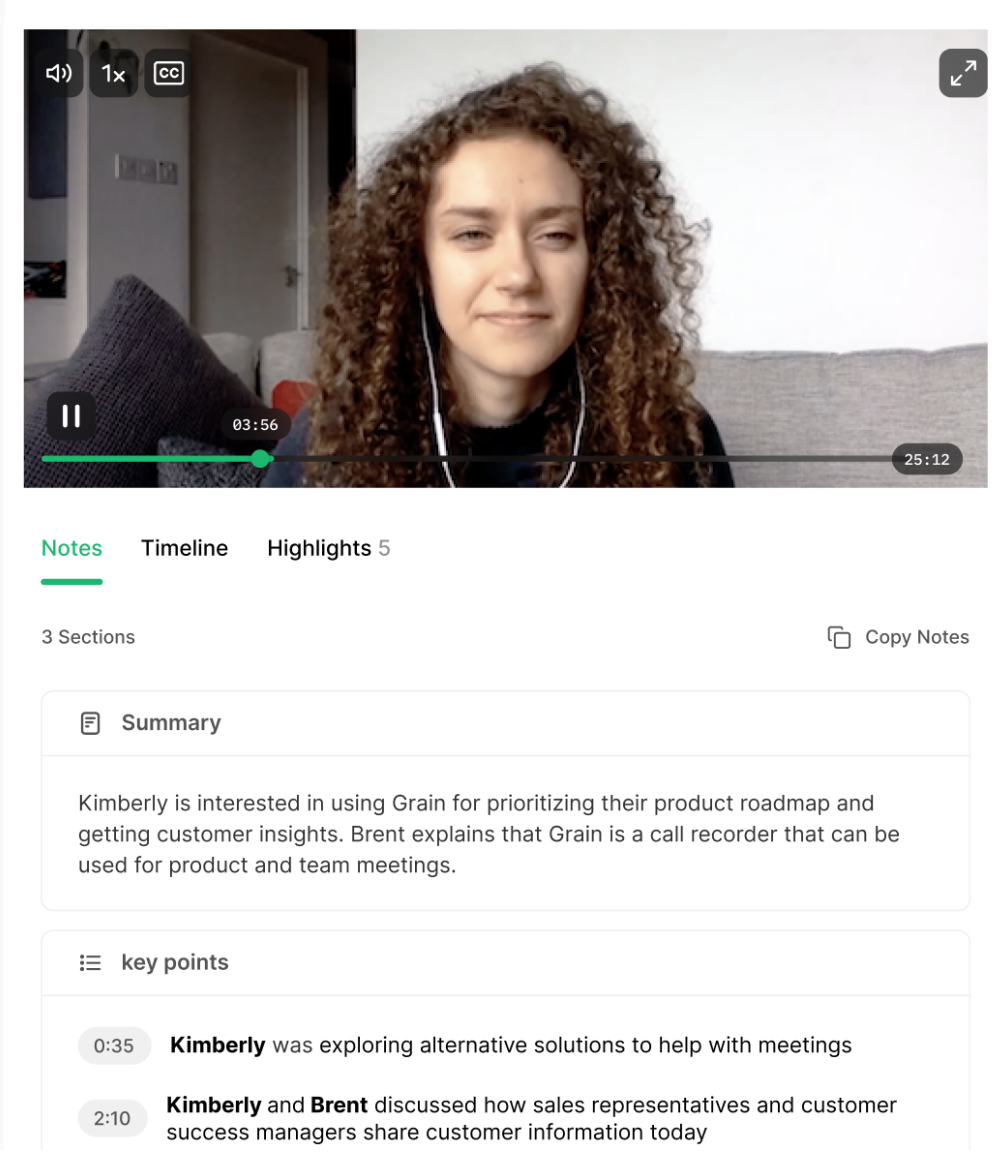
Grain provides summaries that layout the key points and what’s coming next in your user interviews or meetings. Every moment is a clickable timestamp as you flag the important parts, so you and your team can scan through it super fast as well. You are able to turn lengthy sessions into easily shareable video clips in seconds.
Best For: Those looking for more capabilities beyond just text summarization such as highlighting key moments and creating video reels to share as well as and integration into products like Slack, HubSpot and Salesforce.
5. Genei
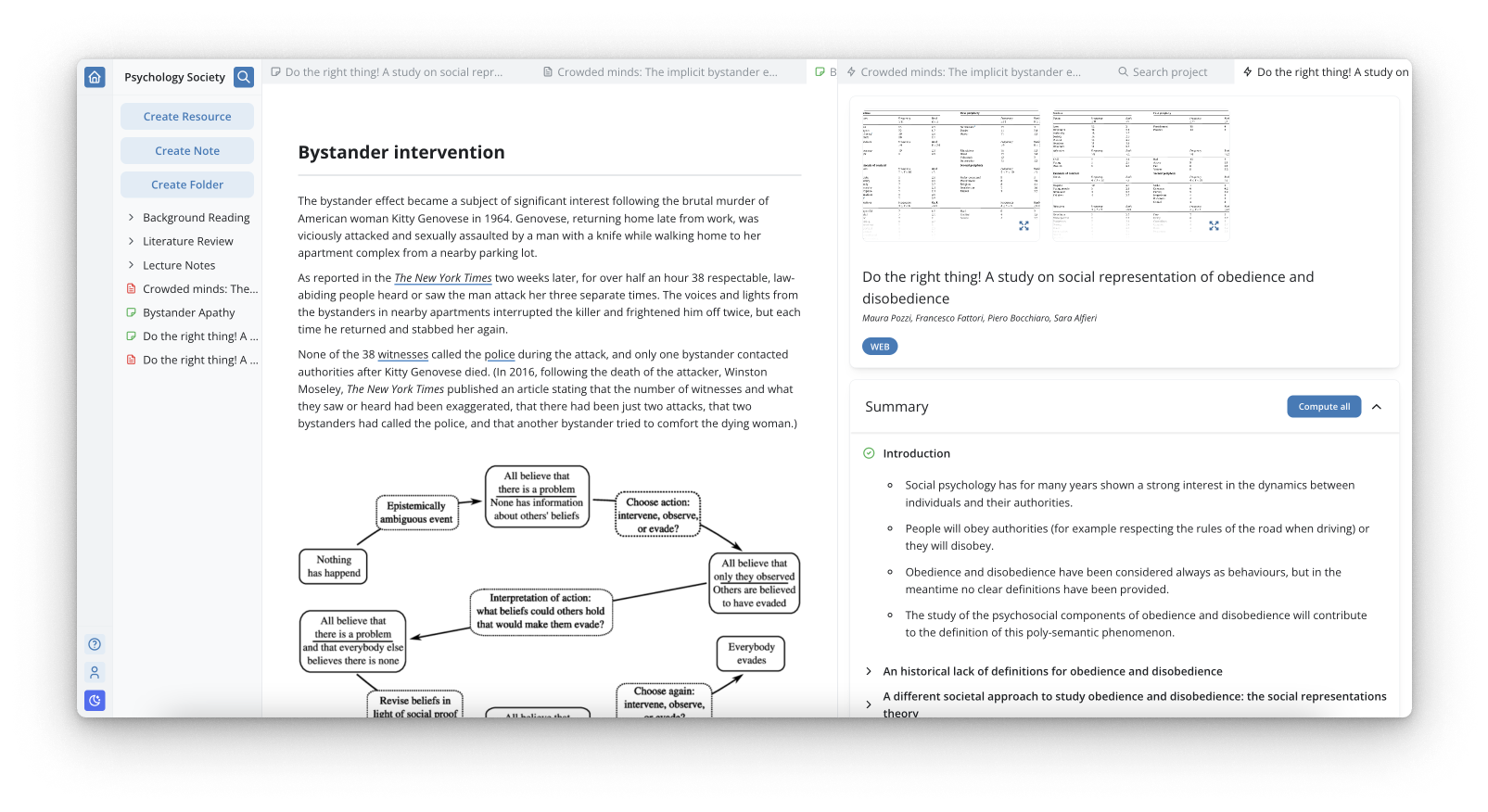
Genei is an AI-powered text summarizer that can generate summaries of up to 10,000 words in just a few seconds. It is highly accurate and can preserve the key points of the original text and summarize background reading and produce blogs, articles, PDFs and reports faster. It is able to identify the main points of the text, as well as the supporting evidence. Their website boasts “98% of users say genei saves them time by paraphrasing complex ideas and enabling them to find crucial information faster.”
Best For: Secondary research, summarizing research articles and blogs online or PDF’s
How to prioritize what you need in a AI summarization tool before deciding to pay for one
- The size of your project: If you have a large project with a lot of transcripts, you will need a tool that can handle the volume.
- Your budget: AI tools can range in price from a few dollars to hundreds of dollars per month.
- Your specific needs: Consider what features are important to you, such as accuracy, format, and consistency.
So while Ai transcript summarization is an exciting tool to add to your arsenal it’s important to also keep in mind it is there to help assist you, not do all the work for you. What are your thoughts on AI transcript summarization tools, have you tried any that really stand out to you?







